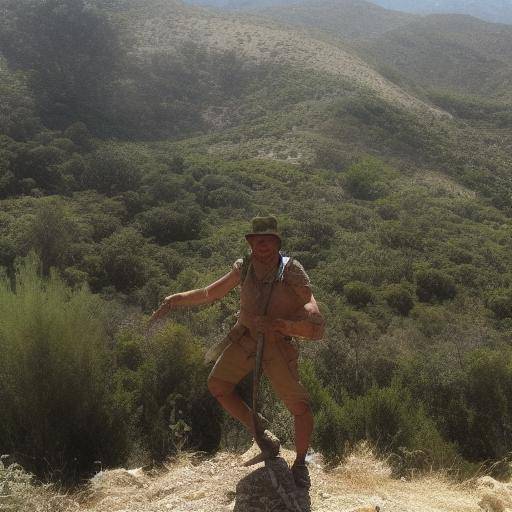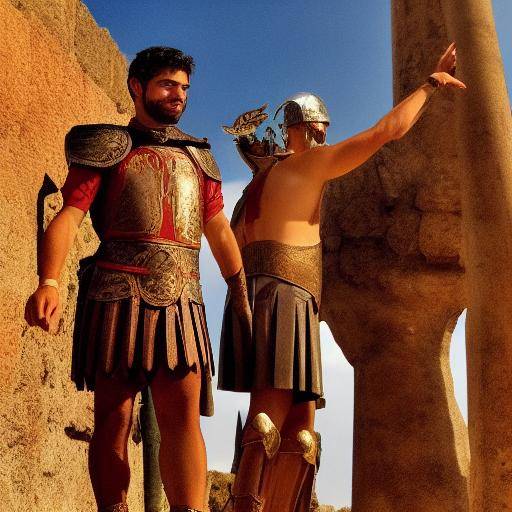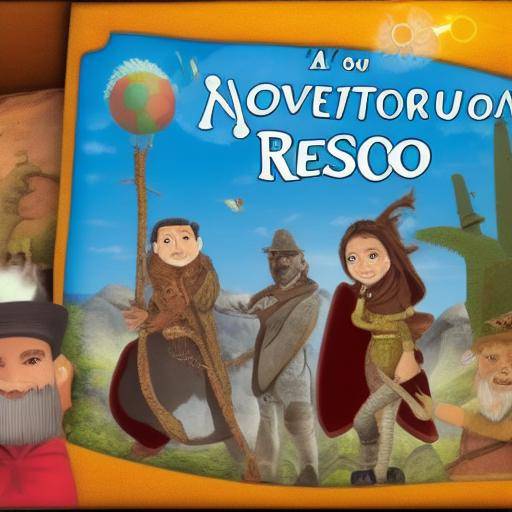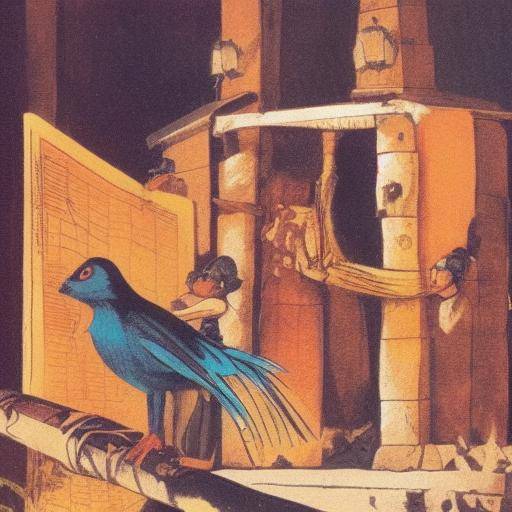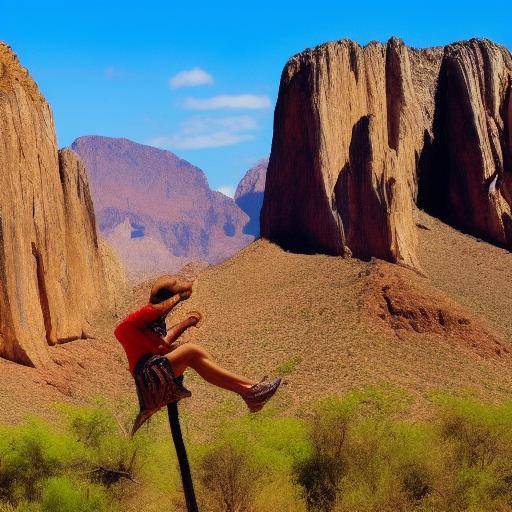
The world of travel and adventure is full of deep-rooted superstitions and beliefs that have been transmitted over generations. From rituals before a trip to amulets that take with you in adventures, superstitions can play an important role in the life of travelers. In this article, we will explore the most common superstitions related to travel and adventure, analyze your historical background and discuss your relevance today. In addition, we will provide practical advice and details on future trends in this fascinating area. Prepare to discover the world of the superstitions of travel and adventures!
Introduction
The act of travel has historically been linked to supercheries and rituals that seek to guarantee protection and good auguries on the way. These beliefs have evolved over time, but remain present in contemporary travel culture. In this article, we will explore the superstitions that have left their mark on travelers of all time and the most recent advances in this area. Join us on this journey through the superstitions of travel and adventures.
History and Background
The superstitions related to travel and adventures have their roots in diverse cultures throughout history. Since ancient times, human beings have sought to ensure their protection before undertaking long trips or dangerous expeditions. In ancient Rome, for example, travelers used to make offerings to Mercury, the messenger god and protector of travellers. Also, in the Nordic culture, it was believed in the protection of Odin during the maritime crossings.
In the era of discoveries, the superstitions of the sailors became even more complex, with the inclusion of amulets, rituals and mystical practices that sought to ensure a safe and successful journey. The scope of exploration led to an amalgam of beliefs and customs, many of which have permeated to the present day.
Deep analysis
Superstitions in travel and adventure continue to play a significant role today. Although the sophistication of modern travel has reduced the need for purely superstitious rituals, many people still resort to practices they consider to be carriers of good luck. In addition, the boom in adventure tourism has led to the resurgence of old beliefs related to protection and prosperity during intrepid expeditions.
Technological advances have not completely eradicated superstitions in the field of travel and adventure; on the contrary, they have adapted to the modern era. From the choice of travel date to the choice of seat on a plane, superstitions persist, showing the deep relationship between the human psyche and the uncertainty inherent in exploration and movement.
Comprehensive review
In the field of adventure sports and outdoor activities, superstitions also play a significant role. The climbers, hikers and extreme sportsmen often resort to pre-adventure rituals that seek to ensure their safety and success in the company they engage. On many occasions, these beliefs become an integral part of the psychological and emotional preparation that underlies the practice of risk sports.
There are psychological studies suggesting that superstitions can have a positive effect on risk performance and perception during adventure activities. By providing a sense of control and security, superstitions can act as a psychological mechanism that helps adventurers to face challenging situations with greater confidence and determination.
Comparative analysis
The relationship between superstitions and travel may seem irrational at first sight, but shares similarities with other ritual and symbolic practices present in various cultures. In many ways, the superstitions of travel and adventure reflect the human need to find meaning and security in an uncertain world. Like religious rituals or family traditions, travel superstitions offer a sense of continuity and connection with past generations, reinforcing the idea that the act of travelling is imbued with a deeper spiritual and emotional meaning.
Practical Tips and Accessible Tips
Although superstitions may seem irrational from a secular point of view, it is important to respect the beliefs and practices of different cultures and communities. While it is possible that we do not share the same beliefs, recognizing the importance of superstitions for others is essential to foster mutual understanding and respect.
For those who wish to incorporate the essence of superstitious beliefs into their own travels, it is important to reflect on the underlying meaning of such practices. Some superstitions, such as wearing a protection talisman or performing a brief ritual before a journey, can act as symbolic reminders of the importance of preparation, caution and hope in our lives.
Industry Perspectives and Expert Reviews
Professionals in the field of tourism and adventure recognize the influence of superstitions on the decisions and attitudes of travelers. For many, superstitions not only represent a fascinating part of global culture, but also offer a window to emotional motivations that drive the desire to explore and discover new horizons. In addition, tour guides and adventure operators often incorporate local superstitions into the experiences they offer to visitors, thus contributing to the preservation and dissemination of these traditions.
Case Studies and Practical Applications
A notable example of the influence of superstitions on travel can be seen in the Japanese tradition of omamori, traditional amulets that are sold in shrines and temples to give protection and good luck to travelers. These amulets, which often take place during travel, represent a tangible link between the spirituality and the practical experience of the journey. Although their real effectiveness can be discussed, the popularity of the omamori emphasizes the lasting importance of superstitions in the field of travel and adventure.
Future Trends and Predictions
As the world of tourism and adventure continues to evolve, superstitions are likely to play a persistent role in how people approach and perceive their travel experiences. The combination of ancestral traditions with technological innovation and changing cultural attitudes can result in new forms of expression and adaptation of superstitions in the context of travel and adventure. Moreover, the growing interest in sustainable and conscious tourism could lead to a resurgence of ritual practices linked to environmental protection and respect for nature during travel.
Conclusion
In short, the superstitions of travel and adventure constitute a fascinating and lasting aspect of human experience. Throughout history and the contemporary world, these beliefs have exerted a significant influence on how individuals prepare and face their journeys through land, sea and air. Although superstitions can be the subject of diverse interpretations, it is undeniable that they play a fundamental role in setting up travel and adventure experiences.
Frequently asked questions
What are some common travel superstitions in different cultures?
Travel superstitions vary according to cultures, but some of the most common ones include playing wood to ensure a safe journey, carrying with it protection amulets, avoiding the number 13 in travel plans and performing purification rituals before embarking on an important journey.
Is there scientific evidence to support the effectiveness of superstitions in travel?
While superstitions do not have solid scientific support in terms of their objective effectiveness, psychology has shown that superstitious beliefs can influence people's perception and self-confidence. In addition, superstitions can play a role in building personal and emotional meanings in the context of travel and adventure.
How can travelers respect local superstitions during their journeys?
When visiting destinations with strong superstitious traditions, it is essential for travelers to respect local cultural practices and values. This may involve refraining from actions that may offend local beliefs, such as ignoring taboos or participating in activities considered inappropriate for superstitious reasons.
What role do superstitions play in adventure tourism and extreme sports practice?
Superstitions can act as emotional elements that contribute to the mental and emotional preparation of adventure sports practitioners and extreme activities. By providing a sense of subjective control and security, superstitions can influence the confidence and perception of the risk of individuals in challenging environments.
How has the influence of superstitions on modern tourism evolved?
As tourist trends change and adapt, superstitions have found new forms of expression in the context of modern tourism. Tourist operators and travel agencies can integrate superstitious traditions into the experiences they offer to travelers, which contributes to preserving and disseminating these practices in the field of contemporary tourism.
What are some superstitions specifically related to air travel?
Superstitions around air travel include avoiding the number 13 seat on fixed-wing aircraft, touching the aircraft before boarding to ensure safe flight and carrying protection amulets during travel. These beliefs reflect the anxiety and search for control that often accompany flight experiences.
In conclusion, the superstitions of travel and adventure are an intrinsic and fascinating part of human experience. Over time, these beliefs have accompanied travelers and adventurers, intertwining spirituality, culture and emotional preparation in the exploration of the world. Whether it is old nautical traditions or contemporary practices related to adventure tourism, superstitions add a significant layer of meaning and emotion to the perpetual pursuit of new horizons.
In exploring the superstitions of travel and adventures, it is essential to recognize the diversity and cultural wealth that underlies these practices, as well as their impact on the way we perceive and relate to the act of travel. In doing so, we can appreciate the unique union between the rational and the spiritual that defines our incessant quest for discovery and adventure in the world.
I hope this article is of your liking. If you need more help, I'll be happy to collaborate.


